🎣 1. Get Engaged Leads: To get sales, you must be able to reach people who have the problem your product or service solves
To succeed in sales, you need only two things:
- An irresistible offer and
- A pool of potential customers, known as leads.
But not just any leads—what you need are engaged leads. These are people who don’t just know about your product or service; they show genuine interest in it.
Alex Hormozi, through his journey to success with brands like Gym Launch and Acquisition.com, has proven that knowing how to get masses of engaged leads can launch a business to staggering heights. His own portfolio of companies boast annual revenues of $250 million, thanks to bringing in 20,000 leads every single day.
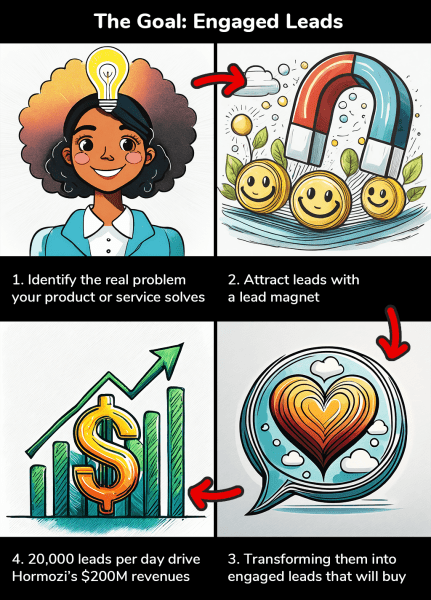
What is Alex Hormozi’s story? It’s nothing short of a rollercoaster. He started with opening 5 gyms in 3 years, establishing a reputation for being able to quickly fill gyms with paying customers. He began doing marketing and sales for other gym owners, but his life took a sharp turn when a business partner betrayed him, evaporating his life savings.
Just as he was recovering from that massive blow, a gym owner in Kentucky caused a massive wave of refund requests, plunging Hormozi into a financial crisis. He had to generate $150,000 in one month or he would lose everything. In desperation, Hormozi offered to teach some gym owners his sales and marketing methods directly for $10,000 each. This ended up being the right business model, and he was able to make $6.8 million in revenue that year alone, and it only went up from there.
Hormozi’s story is a testament to the power of understanding how to generate engaged leads – people who have the problem our product or service solves. And that’s why he wrote this book. To show us how to get more leads, higher quality leads, less expensive leads, and to do it in a reliable way. At the core of Hormozi’s strategy is the lead magnet—a powerful tool to transform a casual lead into an engaged prospect – we’ll talk about that next.
- Success in sales comes from having a great offer and finding people who are really interested in it—getting engaged leads. Hormozi turned tough times into $250 million yearly revenues through the power of getting 20,000 interested leads every day.
According to Alex Hormozi, a person who shows interest in what you sell is called a .
Potential buyer
Engaged lead
Hot prospect
Active follower
Alex Hormozi’s first book, $100M Offers, was all about the first part of sales success: creating an irresistible offer. Your goal should be to have a “Grand Slam Offer,” which he defines like this, “an offer you present to the marketplace that cannot be compared to any other product or service available, combining an attractive promotion, an unmatchable value proposition, a premium price, and an unbeatable guarantee.”
🧲 2. Create a Lead Magnet: Get engaged leads by offering them a free solution to a small, specific problem
To get quality leads, you need a lead magnet. A lead magnet is a complete solution to a specific problem your potential customers have. You offer it for free in exchange for their contact information.
The philosophy is simple: solve a small, specific problem for free, and you pave the way to solving their bigger problem with your core product.
The secret? Your free offer must offer more value than everyone else’s paid products. Your sales and reputation depend on it. It’s about delivering such incredible value upfront that your audience can’t help but think, “If this is what they give away, imagine what I get when I pay!”
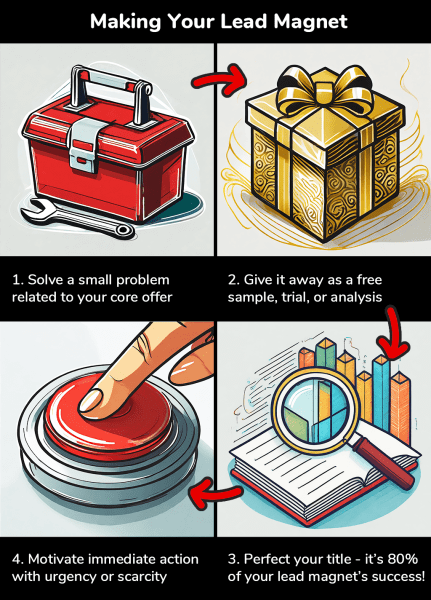
Here’s how to create your lead magnet:
- Identify a Specific Problem: Focus on an issue that’s both narrow enough to be solvable and directly leads to the larger problem your main offer addresses.
- Define your Solution: This could be a:
- Free Analysis: A test or consultation that diagnoses the bigger problem. Like a chiropractor offering a posture check.
- Sample or Trial: Give away your core product, but in limited quantity or time. Like Netflix’s free trial.
- First Step Free: Providing the first part of the solution free. Like an investment calculator that leads to financial advisor services.
- Choose your Medium: Make it as easy to use or consume as possible, whether you’re giving away a video, app, or physical sample. Offer information in a variety of formats, like text, audio, and video.
- Test the Right Name: The power of a compelling title cannot be overstated. Legendary copywriter David Ogilvy said 80% of advertising money is spent on the headline alone. It’s worth conducting polls on social media or running advertising split tests to find a name for your lead magnet that captures attention and curiosity. In his other book, Alex Hormozi shares more advice about how to name your offers.
- Motivate Action: At the end of the lead magnet, add a call to action that tells them exactly what to do next, such as clicking a link or calling a number. Also give them a reason to act now, using principles of psychology such as scarcity and urgency.
But here’s the million-dollar question: How do you get your lead magnet in front of the right eyes? We delve into the “core four” promotional strategies next, that explain exactly how to get the attention of the right people onto your lead magnet.
- To get the contact information of leads and transform them into engaged leads, use a lead magnet. A lead magnet is a free solution to a specific problem – it can be a trial, sample, analysis, or initial step. Make sure you offer unmatched value and end with a clear call to action.
What makes a Call to Action (CTA) effective?
Mentioning Value
Testing and Copy
Visual Appeal
Clarity and Urgency
Russell Brunson gives a lot of hard-won wisdom about how to build effective lead magnet in his book Dotcom Secrets—knowledge he learned while building his software company ClickFunnels to over 100,000 members.
- First, he says we must be careful about what lead magnet we offer, because that determines what kind of customer we attract into our lives, and whether they are a pain or a joy to serve. As a mentor told him, “If you change your bait, you’ll change your customer.”
- Second, Brunson underscored the idea of a clear call to action whenever you are making an offer. He writes, “One of the fundamental rules of marketing is that ‘a confused mind always says no.'”
The “Core Four” Areas of Lead Generation
When it comes to getting leads, you’re always going to be dealing either with people who know you (warm prospects) or those who don’t (cold prospects). Moreover, you can reach out to them one-to-one or broadcast your message to many using public channels. This simplifies all kinds of lead generation into four basic quadrants:
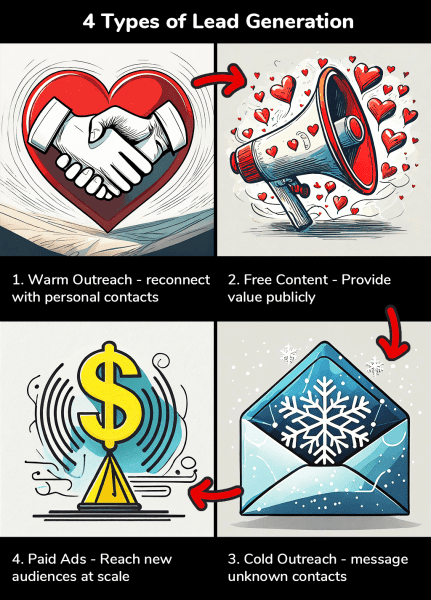
- Warm Outreach (warm/personal)
- Free Content (warm/public)
- Cold Outreach (cold/personal)
- Paid Ads (cold/public)
So now we’ll dive into strategies and tactics for each of these.
🤝 3. Warm Outreach: Starting with who you already know is usually the fastest way to begin generating sales
Warm outreach starts with people you already know—your family, friends, and extended network. This method of lead generation is built on the value of existing personal connections and harnesses the power of starting small. By genuinely engaging with your network and delivering real value, you can lay the foundation for a real, growing business.
Alex Hormozi’s journey began with himself offering physical training and nutrition coaching. He got started by messaging everyone he knew, offering his services for free in exchange for feedback and testimonials. This opened the door to referrals, soon leading him to earning $4,000/month.
Here’s how to apply warm outreach:
- Compile your contacts: Make a list of names of your friends, family, email, and social media contacts. Aim for a list of 1,000 to start.
- The Rule of 100: Make it your goal to contact 100 people daily. Dedicated the first 4 hours of your day to this task. Expect a 20% response rate, with 1% converting into customers. If there’s no initial response, wait a few days and follow up again.
- Begin with a personal greeting: Open the conversation by asking about how they’re doing in a socially friendly way. Mention something going on in their life from social media.
- Transition towards your business topic: Next, acknowledge their reply, give a light compliment, and then ask a question related to your business. Example: Hormozi would ask it they find the time to work out.
- Ask “if they know someone”: Instead of a direct sales pitch, ask if they know someone who might be interested in achieving the results you offer without the usual pain points. This allows you to sound casual and not salesy. Often, they will express their own interest or refer a friend. Example: “Do you know anyone looking to gain some muscle with a personalized workout routine and tailored meal plan?”
- Start with 5 free clients: This provides valuable practice and will lead to testimonials, case studies, and referrals—essential for building your credibility and client base.
- Transition to paid services: Hormozi recommends gradually increasing your prices with every 5 new clients you get.
- Begin with your personal network such as friends, family, and contacts. Contact 100 people per day, using a personal greeting, then asking if they “know someone” interested in your offer. Start with 5 free clients to gather testimonials and referrals.
What's the main reason for asking someone if they know anybody who might want your offer?
To get a direct sale
To ask for a favour
To sound casual and not pushy
To increase your email list
Probably the greatest book ever written related to marketing and sales is Influence by Robert Cialdini. He talks about why giving away free services often leads to getting referrals. This idea is based on “the rule for reciprocation. The rule says that we should try to repay, in kind, what another person has provided us.” That’s the same reason we feel the need to return the favor when someone sends us holiday cards or birthday gifts.
✍️ 4. Free Content: Building a profitable personal brand should be a cornerstone marketing strategy for almost every business
In $100M Leads, Alex Hormozi makes a bold statement: That building his audience and personal brand was THE most valuable thing he’s ever done. He used to believe it’s a waste of time, but he changed his mind when he saw many examples of a personal brand leading to massive wealth, like Kylie Jenner becoming a billionaire at the age of 20. Here’s how Alex Hormozi does his content creation strategy today…
Hormozi schedules 1 hour each month to brainstorm topics for new content. Then he spends 2 days per month filming 30 short clips and 2-4 longer videos. He uses Twitter as a testing ground to see which ideas resonate the most with his audience. If you’re just starting out, he recommends applying the Rule of 100: dedicate 100 minutes per day for the next 100 days to content creation.
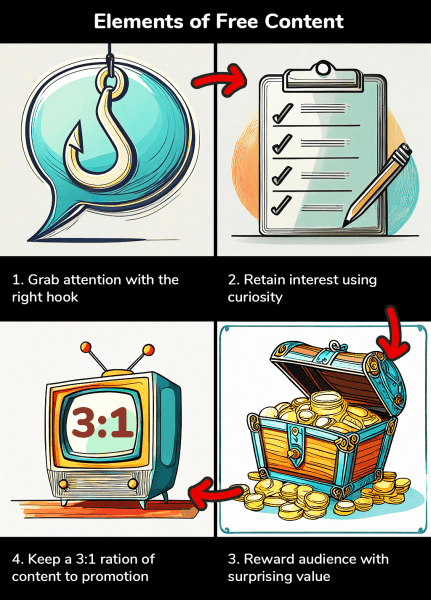
Each piece of content you make can be broken down into 3 parts:
- Hook: First, you must capture their attention. You do this by choosing the right topics, writing compelling headlines, and matching the format that is popular on the specific platform. Topics that do well tend to be based on personal experience, what’s trending, or planned experiments. As an example, popular personal development YouTuber Matt D’Avella published a video that got 10 million views titled “I quit sugar for 30 days.”
- Retain: Keep viewers interested by asking questions and creating curiosity. List posts, step-by-step guides, and storytelling are potent tools to maintain engagement, enticing your audience to stay for the whole journey.
- Reward: Deliver on the promise of your initial hook or headline, so they will want to consume more of your content. Leave them satisfied by exceeding their expectations by delivering even more than you promised. Example: If a post promises to show 3 foods that lower blood pressure, they can add a bonus one at the end.
Stick to a 3:1 ratio of content to promotion. This ensures your audience doesn’t get annoyed by too much advertising. This balance has worked in television advertising for decades.
The social media guru Gary Vaynerchuk recommends the same 3:1 ratio in his book “Jab, Jab, Jab, Right Hook.” He uses boxing as an analogy to show the balance of giving and asking on social media. The ‘jabs’ are about giving your audience lots of valuable content, like helpful tips or entertaining posts. These prepare your audience for the ‘right hook,’ your big ask, like buying something.
This approach builds trust, so when you do ask, your audience is more likely to say yes because of all the good stuff you’ve already shared. Gary Vee’s simple mantra for a good social media post is: “Make it simple. Make it memorable. Make it inviting to look at. Make it fun to read.”
Read more in Jab, Jab, Jab, Right Hook by Gary Vaynerchuk
- An audience and personal brand is one of the most valuable things you could build, according to Hormozi. Make sure each piece of content contains hooks their attention, retains their curiosity, and rewards by fulfilling the initial promise.
What does Alex Hormozi NOT mention as a method for creating a compelling hook for your content?
Sharing personal stories
Riding current trends
Conducting experiments
Adding engaging music
📞 5. Cold Outreach: Transform strangers into engaged leads and buyers through a personal touch and adding massive value
Cold outreach is contact people you’ve never met through email, calls, and text messages. It may sound like a big challenge, but when done right, it’s a powerful way to expand your reach and grow your business. So here’s how Alex Hormozi does it, turning strangers into leads and customers.
- Where do you find people to contact? First, you need to gather a list of names and contact info of people who may be interested in your product or service. Three ways to do this:
- a) Software scraping: Using software to find relevant contacts across the internet. A quick Google search for “outbound leads scraping tool” will give you a starting point.
- b) List brokers: These are professionals you can buy contact lists from, but first make sure to ask for a sample to test the responsiveness of the list.
- c) Manual searching: The most time-consuming method, involving digging through online communities and social media profiles to find contact information.
- What do you say in your message?
- First, you personalize: Start with something personal, like commenting on a recent article they’ve published.
- Then, add massive value: Offer them something incredibly valuable for free, something so good they’d feel silly refusing. This could be a service that usually costs money. (Consider delivering the service part of the advertising cost. As an example, one accounting business helps people incorporate their business for free, then sells additional accounting services they will need afterwards.)
- Repeat 10,000 times. The biggest mistake people make with cold outreach, claims Hormozi, is dramatically underestimating the amount of messages they need to send to be successful with it. He says to contact a minimum of 100 people per day for the next 100 days. Make sure to follow up a couple of times with each person. (A lot of this work can be automated with software.) And, in the end, you should only expect 1-5% of people you contact to become engaged leads.
- Cold outreach begins with finding lists of names with contact information of potential buyers. You can do that through software scrapers, list brokers, or manual searching. Craft a compelling message by starting with a personalized comment, then offering something for free they would usually pay for. Repeat 10,000 times to get significant results.
To make cold outreach effective, you should offer .
Something they pay for, free
A sales pitch for your thing
A newsletter subscription
An engaging question
📈 6. Paid Ads: Run ad campaigns that are profitable so you can scale your business – to find a winning ad, just start testing with $100
The world of paid ads can seem confusing and risky, but it has the power to transform the direction of your business. Alex Hormozi actually dedicates two separate chapters of $100M leads to paid ads, so he definitely considers this to be a foundational business strategy.
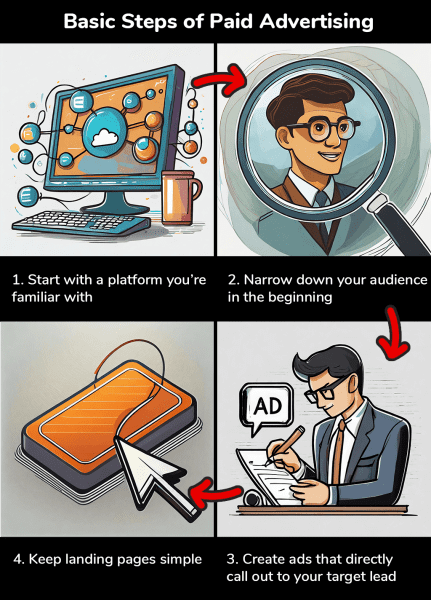
He breaks down paid ads into a few key steps that most of us can follow.
- Choosing Your Platform: Start where you’re most comfortable, like Facebook. Familiarity breeds confidence and efficiency in ad creation and management.
- Targeting the Right Audience: Precision is key. Start with a narrow focus using demographic details like age and interests, then expand as you learn what works. Facebook’s lookalike audiences are a goldmine, allowing you to target users similar to your existing customers, simply by uploading a list of emails.
- Crafting Your Message: Your ad needs to grab attention, deliver value, and compel action. Begin with a direct call-out to your ideal customer, such as “Attention gym owners.” This introduction is the most important part of your ad, by far, so spend more time on it. Then sprinkle in the promise of value, such as “Discover how I gained 62 new gym members last month.” And end with a clear call to action (CTA) that tells them exactly what to do next.
- The Landing Page: Simplicity wins. Create a landing page that mirrors the promise of your ad and contains only a headline, a form for collecting emails, and a submit button.
What if your ad doesn’t work at first? Then you must understand there are Three Phases of Advertising:
- Setup and Tracking: Lay the groundwork by ensuring you can track the performance of your individual ads.
- Testing and Learning: Be prepared to lose money initially. This phase is about discovering what resonates with your audience. Remember, it often takes multiple attempts to find a winning formula.
- Scaling Success: Once you find an ad that works, it’s time to “print money.” Scale it up responsibly, keeping an eye on your return on investment.
A couple of final points:
- When Ads Don’t Perform: If you’re not seeing the returns you hoped for, the issue is often not the ad cost but how much profit you’re making from each customer. Introducing an immediate upsell is Hormozi’s go-to move for increasing customer lifetime value. Aim for a 3:1 ratio of what you make versus what you spend – the technical terms for that are lifetime gross profit versus customer acquisition cost.
- Just Start: Hormozi’s final piece of advice is simple yet profound—begin. Google “How to place an ad on Facebook” or another platform and dive in with a $100 budget, so you can learn the ropes, and start refining your approach. The act of starting demystifies the process and sets you on the path to mastery.
- Paid ads contain a few key steps, like picking a platform you’re familiar with, beginning with narrow targeting, setting up profit tracking, and testing, testing, testing different ads until you find a winner to scale up. Each ad should begin with a call out to your target customer, a promise of what they’ll get, and a clear call to action.
What is NOT an essential element in a landing page, according to Hormozi?
Visuals
Headline
Submit button
Email form
🔥 6. More, Better, New: Put your lead generation on steroids by increasing output, continuously testing, and expanding to new channels
Alex Hormozi takes lead generation to the next level in “$100M Leads” with a simple framework: More, Better, New. This approach is about working harder, but it’s also about working smarter and expanding into new territory. Let’s dive into how you can apply this powerful strategy to your business.
More: Double Your Output
The first step is straightforward—double what you’re currently doing. Sounds too simple? Hormozi’s experience backs it up. After investing $120,000 in coaching from a top influencer, the key advice he received was simply to post way more often. Hormozi began posting 5 times per day and he saw his audience skyrocket, gaining 200,000 followers in one year and an additional 1.2 million the next.
Similarly, he learned that while distributing 300 flyers for a gym got no results, a friend’s advice to distribute 5,000 daily made a dramatic difference. The lesson? More output equals more leads.
Facebook’s research supports this, showing the top 0.1% of advertisers test eleven times more ads than the average.
Better: Constantly Test and Optimize
Improvement is an ongoing process. Hormozi advises testing 1 variable at a time to refine your strategy. Whether it’s tweaking your ads, enhancing your landing pages, or optimizing the customer journey, focus on the areas with the most significant impact.
Where to start?
- Starting at the top of the funnel (like your ads) can yield the most substantial improvements in conversion rates.
- You can also begin with the largest constraint—the points where your funnel is currently underperforming.
New: Explore Uncharted Territories
Finally, Hormozi encourages venturing into new domains. Most entrepreneurs significantly underestimate their potential reach. This might mean:
- Experimenting with different types of content, like branching from YouTube videos to shorts,
- Expanding onto new platforms, like from Facebook to TikTok.
- Exploring entirely new sales channels, such as cold outreach.
- To supercharge your lead generation, you can do more like doubling your posting frequency, you can do better by optimizing your approach like testing way more ads, and you can do new by exploring new content types, platforms, and sales channels to reach untapped audiences.
According to Facebook's own research, the top 0.1% of advertisers test how many more ads compared to the average?
Two times
Five times
Eleven times
Twenty times
“Scientific Advertising” by Claude Hopkins is a classic advertising book that first emphasized the critical importance of continuously testing in marketing campaigns. Hopkins illustrates this through a compelling case study involving a food advertiser, likely Quaker Oats. Over five years, Hopkin’s agency tested 75 different ads, eventually reducing their cost to get a customer by 75%. Back then, they had to measure the individual response from each ad with unique coupons, so today it is much easier with digital tracking tools.
Although that book is from the 1920’s, there is timeless advice in it such as, “The advertising man studies the consumer. He tries to place himself in the position of the buyer. His success largely depends on doing that to the exclusion of everything else.”
Read our summary of Scientific Advertising by Claude Hopkins
🌟 7. Lead Getters: Leverage other people’s effort to multiply your lead generation through referrals, employees, agencies, and affiliates
In “$100M Leads,” Alex Hormozi unveils the power of ‘Lead Getters’—a strategy that significantly multiplies the reach and impact of your business’s lead gen efforts. This approach isn’t just about finding new leads; it’s about creating systems that will continuously fuel your business’s growth.
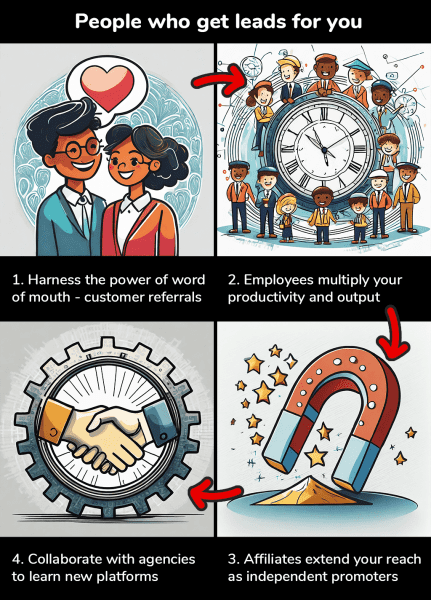
Let’s break down the four pillars of this strategy:
a) Customer Referrals
Referrals are gold. Hormozi points out that many businesses fail simply due to high churn rates, constantly needing to acquire new customers. Word-of-mouth is the opposite of that and can lead to exponential growth. Hormozi’s own experience is telling—his ad platform shut down, and they didn’t even notice for two weeks, because they were making $500,000 per week in sales from customer referrals alone.
There are 2 major reasons you may not get referrals:
- Your product is not good enough. Focus on delivering an exceptional experience, which you can do by focusing on a more specific group of customers, getting your customers better results, or giving them a quick win after signing up.
- You don’t ask. To encourage customers to refer, ask them who else they know who might be interested and even consider paying them directly for each person they refer. (This strategy caused the exponential growth of companies like PayPal.)
b) Employees
Why do employees matter? Because they free up your time. Imagine trading 80 hours of your workweek for 400 hours of collective productivity. That’s the magic of employing the right team. The challenge lies in moving past the mindset of “only I can do it right.”
You get employees by asking around your network, recruiting them individually, and posting job listings. To train them, focus on making a detailed checklist for each process, then have the employees watch you do it, so they can copy what you do to replicate your results.
(The best book on growing your small business using employees and systems is The E-Myth Revisited by Michael Gerber — read our summary.)
c) Agencies
Most people use agencies the wrong way, says Alex Hormozi. Rather than outsourcing your advertising, partner with agencies to learn from them. Hormozi suggests a model where agencies initially handle your campaigns but, over time, the agency teaches your team to do the work themselves. This approach ensures your in-house team gains the expertise to manage and innovate on various platforms, turning what was once an external service into an internal strength.
d) Affiliates
Affiliates are people who send you customers, but operate as an independent business. They can significantly extend your reach. Treat them as you would any other lead—you must find them and “sell” them the opportunity to promote your offer. An idea affiliate has a warm audience of people who are likely to find your product, so to find affiliates ask yourself: Who else are my customers buying from?
The best affiliate strategy that Hormozi uses involves getting potential affiliates invested by getting them to first pay for the product or training on how to promote it. You can make your lead magnet part of their offer—like when his supplement business offered free nutrition consultations to new gym members, then the gym owners would receive a commission if someone bought a supplement at the end of the consultation.
- Recruiting other people to be your “lead getters” can be the most powerful strategy you ever do. You can encourage customer referrals by making your product offer more value and directly asking. You should find and train employees to do what you are now doing, using process checklists. You should hire agencies, not to manage your campaigns indefinitely, but to teach you. And find affiliates who already reach a group of your potential customers, and offer their audience your lead magnet.
What strategy for increasing customer referrals is NOT mentioned in $100M Leads?
Increasing product helpfulness
Direct payment for referrals
Frequent communication
Focusing on a more specific customer
✅ 8. Get to Work: The Hormozi way to success is to wake up early and follow a simple checklist so you can’t make excuses
Alex Hormozi’s journey comes down to one powerful lesson: the path to success isn’t paved with secrets or shortcuts; it’s built on the willingness to dive in, experiment, and embrace failure as a stepping stone to growth.
Hormozi says his highest ROI habit is simply waking up between 4-5 am and getting straight to work. This discipline, coupled with having a simple advertising checklist beside him that says exactly what he must do each day, keeps him focused and productive. This isn’t just a to-do list; it’s a chart that outlines exactly what actions he must repeat each day, when, where, and for how long. For example, it may say to reach out to 100 people during the first four hours of the day. This one-page approach eliminates excuses and procrastination, ensuring every day is a step forward.
During the last chapters of $100M Leads, Hormozi shares a crucial moment that transformed his approach to business. He was invited to attend an exclusive event with 8-figure entrepreneurs. Despite not being at their level yet, Alex and his wife Leila attended.
At one presentation by an entrepreneur making a mind-boggling $3 million per month, Alex learned a game-changing insight. Someone asked the guy what course he learned from, and the entrepreneur responded that he no longer could learn new ideas from courses. Instead, his real learning came from dedicating a percentage of his advertising budget to relentlessly testing new ideas.
This advice granted Hormozi the “permission to fail,” a liberating mindset that caused him to triple his advertising budget and embark on a surge of testing. By adopting a mindset of experimentation—fine-tuning ads, exploring new platforms, and innovating follow-up strategies—his revenue catapulted from $400K to $4M a month.
- Wake up really early and get straight to work. Create a simple one-page checklist that says exactly what actions you must repeat each day, when, where, and for how long. Dedicate a portion of your money or time to experiments that will often fail, but sometimes result in learning that can multiply your results.
What mindset led to Hormozi's revenue jump from $400K to $4M a month?
Competitive analysis
Risk aversion
Cost-cutting
Experimentation
- Identify core problem: Write down the main issue your product or service solves. This will help you begin to focus on where and how to reach leads.
- Develop a lead magnet: Create a free, valuable resource solving a related smaller problem. Ideally, what they need after solving that smaller problem is your core product.
- List potential contacts: Compile names of friends and family. Contact them all, asking if they know anyone who could benefit from your offer.
- Launch free content: Start a blog or social media channel dedicated to your expertise.
- Find prospects on LinkedIn: Search for potential leads and personalize your outreach message.
- Allocate an ad budget: Set aside $5/day to test different ad variations on a familiar platform.
- Double your efforts: Choose one marketing activity and increase its frequency starting now.
- Implement a referral program: Offer current customers a reward for referring new ones.
- Wake up early: Start tomorrow by setting your alarm one hour earlier to focus on marketing tasks.
- Create a daily marketing checklist: Write down daily tasks every morning and tick them off.

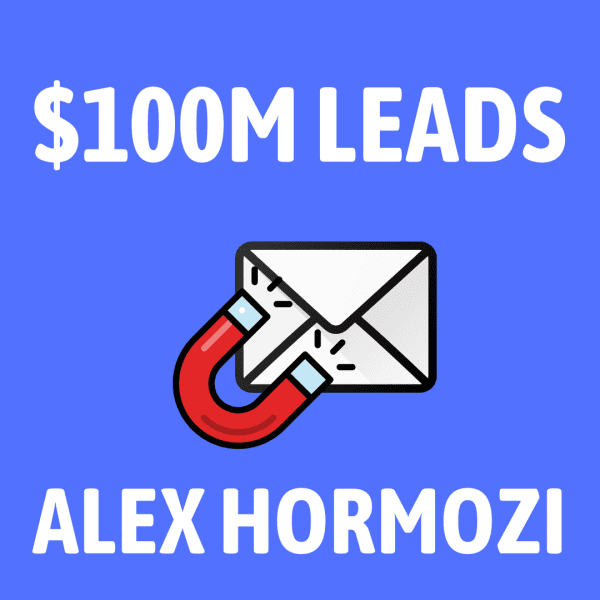










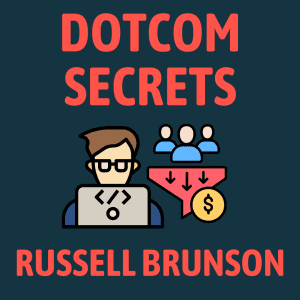
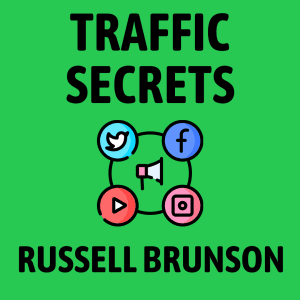
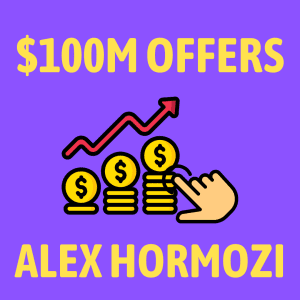
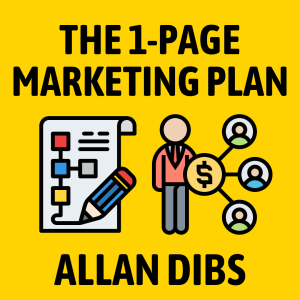

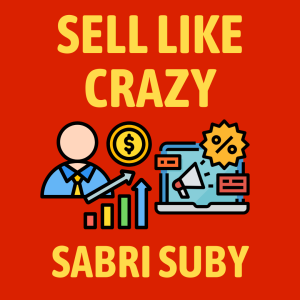
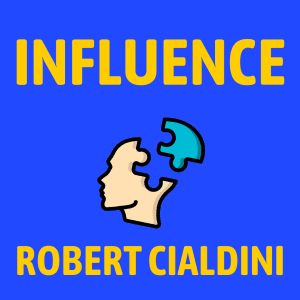
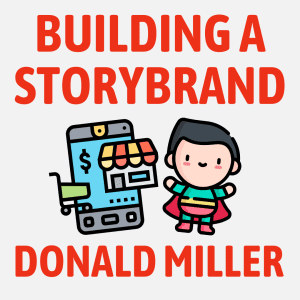
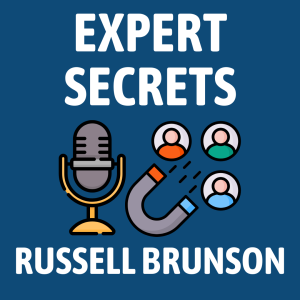
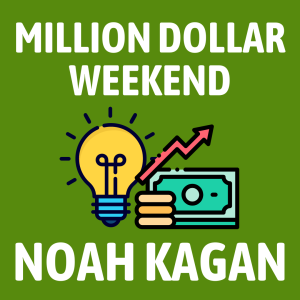

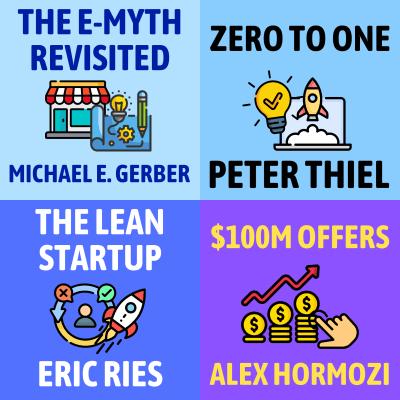




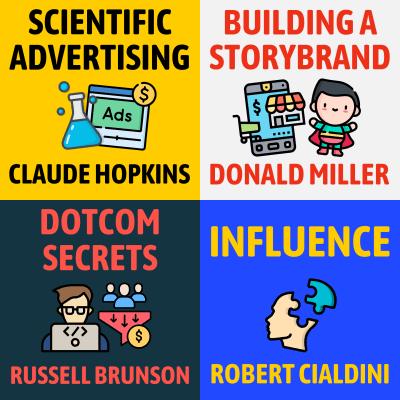
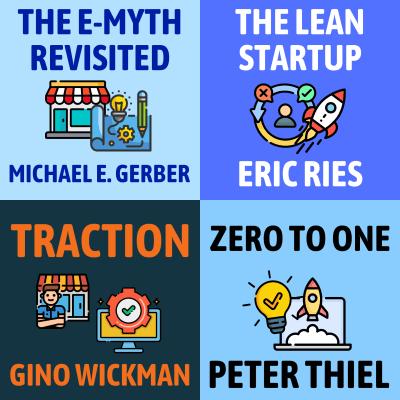
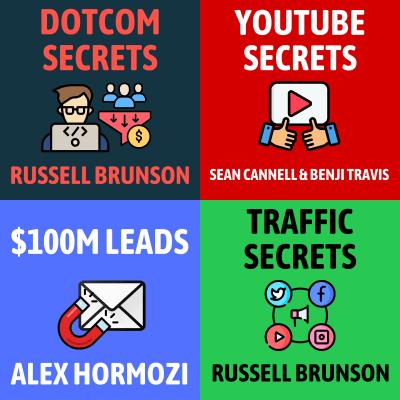

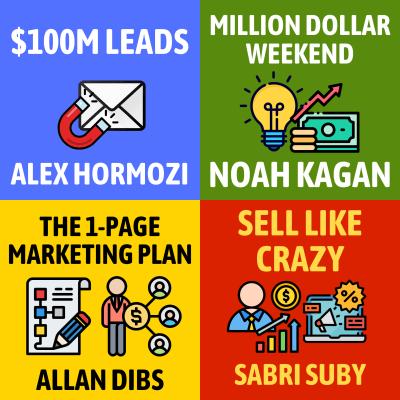
Community Notes